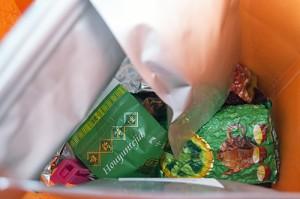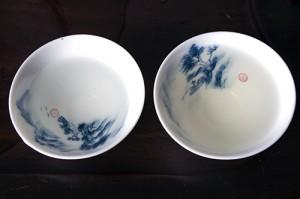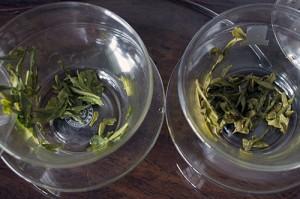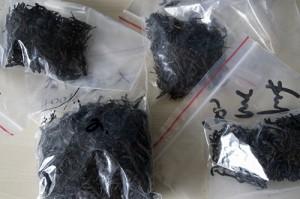A common talking point among tea drinkers- at least in online forums- is how much tea one has.
“Oh I made it a point to whittle down my collection, so I’m down to my last 100 or so packets.”
“I don’t really keep track but I suppose there should be a couple of hundreds.”
“Let me pull out my spreadsheet to check the latest figures.”
And so forth.
Unless you drink primarily tea that improves with age- see this article for a discussion on this topic- this is actually one of the most common mistakes that tea drinkers makes- hoarding tea.
Why is too much tea a problem?

Or perhaps more precisely- the sub-optimal state of tea.
In the workshops I have conducted- be it individual or corporate- one of the most common questions I have been asked is “How long can my tea last?” or some variation of this.
The long answer can be found here but here is a short one- depends on which type of tea.
And the main problem lies with green tea.
Green tea if stored properly can last for 18 months to 2 years.
“If stored properly” is a big caveat though.
We always remind customers that once the seal is open- rendering our oxygen-absorber no longer effective- try to consume the tea within 2-3 months for optimal results.
A Visual Comparison
As is often the case, we have photo evidence to back this up.
These 2 are both Dafo Longjing from the same batch.
The one on the left was buried in the labyrinth known as my tea cupboard for 3-4 months after opening. Lost in the shuffle and I opened another pack (actually 2) after I failed to find this.
The other packet has been opened for about a month or so.
Keeping all other variables constant:
i) 100 cc glass gaiwan from same manufacturer

iii) 2 minutes infusion time for first infusion
iv) Water temperature of 80⁰C
v) Same brewing methods- pre-warmed, bottom drop and lid partially covered
As you can see the liquor of the ‘older’ Dafo Longjing is duller and a darker yellow compared to the bright, clear greenish liquor of the other one. This is even more ostensible when comparing the wet leaves.

Unfortunately this is an all too common mistake- many of us like variety (nothing wrong with that inherently) – and we buy 3-4 different types of teas and then proceed to open every pack and try.
The end effect is that unless we drink these teas exclusively daily, sooner or later they will wind up in sub-optimal stages.
This is also part of the reason why the gastronomic delight of green tea is often not fully appreciated.
While this problem is most acute for green tea, it holds true for lightly oxidized oolong teas like Wenshan Baozhong and the green style Tieguanyin or Taiwanese Oolongs.
Packaging Matters
One day I was at my friend’s place for tea. As was our custom we started with some Minnan Oolong- yes his family was from Anxi- and then he brought out a transparent Ziploc bag and said “let’s try this Shuixian I’ve got from a vendor”.

In a mixture of disgust and dismay he lamented “the aroma is gone” and threw away the whole packet.
Transparent bags don’t retain the flavor for more than a week- less if you expose to sunlight- but it remains a popular type of packaging, perhaps due to its aesthetic value.
Another common culprit is re-sealable bags. We transited from our original Ziploc bags because we realize the propensity for poor re-sealing, ever so often there is a small gap and oxygen is one of the primary causes of deterioration of tea quality.
Though in an ideal world we would use pewter tea caddies to store our tea, unless you have a lot of money and a huge tea cupboard, this is not practical.
Why does Hoarding Occur?
Apart from people who get into tea for its ‘snobbish appeal’, I don’t think anyone sets out to hoard tea.
The main reasons for having too much tea are:
i) We want to try a wide variety
ii) We don’t like those teas THAT much
“Have you tried xxx tea? It is divine?”
“Oh you haven’t? You don’t know what you are missing out on!”
And so forth.
Particularly if you have a circle of tea friends, it is a slippery slope.
So every gathering, we come away with a list of ‘must-try’ teas and our inventory expands.
This is often compounded when someone’s “must-try” is really a “I’ve had better”, even if the tea isn’t really half bad, when there is a more compelling option and a ‘daily tea quota’, a lot of those teas get lost by the wayside.
Sometimes it is not a knock on the tea it is just that we have more compelling options and it takes quite a lot to displace our staples.
By the time we recall those teas and ‘get in the mood’ for them, they may be in a sub-optimal state and the likelihood of them ending up in our teapot (or gaiwan) the next time becomes even remote.
If there is an even worse state of this, it would be hoarding sample sized packages.
Many friends I know try to get around this by buying sample sized packages. As the effort required to pack a 50g pack is only marginally more than that to pack a 10g pack, the price of the latter is not proportional to its size.
Coupled with the fact that it becomes even less appealing if a better packaging (read: more expensive) is used, sample size packets don’t provide the best environment for long term storage.
In the next part, we will look at another common mistake many tea drinkers make- “If you had one, you had them all”.
See other articles on Selection and Storage of Tea
